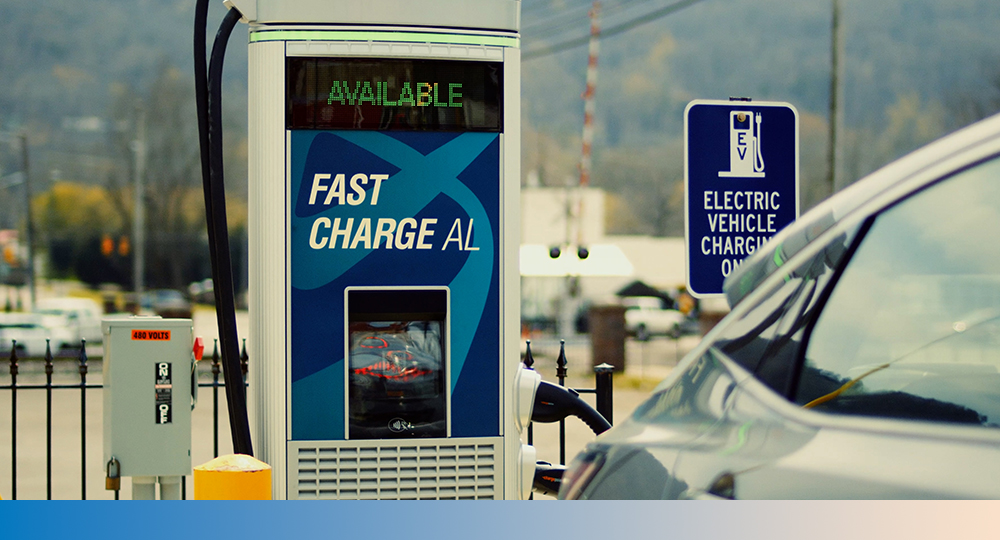EV tax credits, policy perks and more.

Q&A with Ingrid Malmgren, policy director for Plug In America.
UPDATE: The federal tax rebate through the Inflation Reduction Act expired September 30, 2025.
Electric vehicle (EV) tax credits and rebates help make buying an EV more accessible. However, understanding which vehicles qualify and how the credits work can be confusing! To help make sense of the changing landscape, we chatted with Ingrid Malmgren, one of the industry’s leading policy experts and an early EV adopter.
Malmgren, policy director for Plug In America, has been riding the EV wagon for nearly a decade, enjoying transportation that produces zero tailpipe emissions. She leased her first EV in 2016 and has been enjoying gasoline-free rides ever since.
During our illuminating conversation, she shared the joys of driving a “zippy” electric vehicle, the satisfaction of living a zero tailpipe emissions lifestyle, and the exciting possibilities that EVs could provide for energy security and grid stability.
And yes, she also shared some helpful resources for understanding the ins and outs of EV rebates! Read on for an EV tax credit checklist and for Malmgren’s take on:
- How EV policy changes are paving the way for job growth, EV adoption, and more affordable electric car options.
- How the EV tax credit applies to purchasing or leasing.
- How the 30C Alternative Fuel Vehicle Refueling Property Credit can help offset the cost of home charger installation
- How EV policy can change over time.
This interview has been edited for length and clarity. The views and opinions expressed throughout belong to the interviewee and do not necessarily reflect the official policy of Plug In America or Tennessee Valley Authority. Consult a licensed tax professional for advice on your particular circumstances.

TVA EnergyRight: So what got you so hooked on EVs?
Malmgren: My first project was a vehicle-to-grid road map. And I worked with a team for NYSERDA.1 I was just fascinated at what an incredible role these mobile energy storage devices, these batteries on wheels that are EVs, could play in fitting into the grid. I remember going to visit our transmission provider2 and it looked like Star Trek in there!
That, and it was just so liberating to be zooming around in one. EVs are so zippy and fun to drive. And to just not have to worry about gas and fuel.3 I never even look at the mileage unless I’m road-tripping – it just feels infinite by comparison. Being able to zoom around in the silence and not having to worry about tailpipe emissions and gasoline is liberating.

TVA EnergyRight: What would you want folks to know about EVs?
Malmgren: Oh, boy. First of all, drive an EV, try it! April was Drive Electric Earth Month and Drive Electric Week is in the fall. There are events all over the country, including Tennessee, Kentucky, Georgia, Alabama, Mississippi, Virginia and the Carolinas. You can drive EVs and talk to people who own EVs and hear about their experiences in your community. I think once people drive EVs they’ll see that they’re so quiet, they feel so solid and they’re so powerful. And they require so little maintenance. They cost a lot less to operate and maintain. That’s another big, important thing.

TVA EnergyRight: Historically, tax credits or rebates helped people make more energy efficient choices. Can you break today’s EV credits down for our readers?
Malmgren: So the first thing I would say about the federal EV tax credits is that they can seem complicated! Kelly Blue Book has a resource specifically for EVs by state.
In broad strokes, there are a number of different criteria that the buyer and the vehicle would have to meet. And those criteria are going to change over the life of these EV tax credits, through 2032. Things like your income, the amount of critical minerals in the battery, the components in the battery, the MSRP of the vehicle, and where the battery or vehicle is assembled.4 It’s really hard to track that at the consumer level.
I encourage buyers to check out the fueleconomy.gov website. It has been developed specifically to help people understand which vehicles are eligible. Otherwise, it would be really challenging for consumers to navigate this.
As of right now, in 2024, you can get the incentive right up front. So as you’re looking at your vehicle price, you say, OK, this new car is $44,000. I can get $7,500 off up front, reducing the total cost of the car.
TVA EnergyRight: One of the lesser-publicized aspects of EV tax credits is the 30C Alternative Fuel Vehicle Refueling Property Credit. Can you tell us more about this credit and the implications it could have on the EV charging infrastructure and how this credit can help people purchase and install a charging station for their EV?
Malmgren: We’re still waiting on some guidance from the IRS on 30C, but they did recently come out with guidance about where the stations must be located. It’s very geographically dependent. If you’re interested in installing a home charger, you can look up your address8 to find out whether you’re eligible.
You could get up to 30% or $1,000 for your charging station at home. For commercial entities, they can get up to $100,000 for public or business chargers. One of the other things about all the tax credits is that they are either transferable or they are direct pay. This means that you do not have to have a tax liability to qualify. That’s huge! It’s an important piece because if you’re retired, you’re on Social Security, you have a fixed income, you don’t pay much in income taxes, but you want to get an EV, you can get the full amount of the federal tax credit, even if you don’t pay that much in taxes over the course of the year.
This also means that if you’re a municipality, a municipal utility, a local nonprofit, a charity, or a church, you can take advantage of the tax credit to install chargers even if you don’t pay taxes.

TVA EnergyRight: What are some pieces of legislation or policy that you’ve worked on that you have a sense of pride of accomplishment in?
Malmgren: I think the tax credits are a big one. We’ve been advocating for them and continue to advocate for them to be as user-friendly as possible and work hard to advocate for them to be as broadly applicable as possible, particularly for people who might not otherwise be able to afford to get into an electric vehicle. Gas prices are so volatile. They’re just all over the place. Being able to drive an electric vehicle as your daily driver can save you a lot of money on fuel. You can also save a lot of money on repairs and maintenance. Having an EV can be a mechanism to help elevate folks economically. We’ve been advocating hard for tax credits that don’t require people to have a tax liability and to be as easy to use as possible.

TVA EnergyRight: What’s on your EV policy wish list?
Malmgren: If we could keep making the grid cleaner and cleaner, that would be great! One of the big strengths of EVs is that they can charge when the sun is shining, the wind is blowing, or at night. They’re ideal for energy arbitrage. There are times when it’s good to get rid of electricity because there’s too much on the system. Imagine if there were times when it’s actually less expensive to give the power away than it is to try to deal with the excess power on the grid. Having incentives like that would just be phenomenal.
Time-of-use rates9 have a great deal of potential. But even those aren’t being rolled out as widely as one would think. For example, I am in a rural electric co-op territory10 and there aren’t any time-of-use rates available for EV charging. I charge at night typically, but there’s no incentive to do so.
TVA EnergyRight: Good point. Yes, home electricity rates vary by local utility. We discussed this a bit in “Charging your EV at home: Fueling where you live.” Here in the Valley region, for example, Middle Tennessee Electric provides discounted energy overnight to charge your EV. We encourage residents to check with their local power company rate options.
Malmgren: Definitely! And then the third piece is simultaneous to these other two, really working to push for a circular battery economy.
EV batteries are so valuable after they leave an EV that they tend to be used for the grid or some other purpose.11 Having these circular economy provisions in place and updating mining laws at the same time would just really be the icing on the cake to make sure that we have a really clean transportation future that’s also ethical and responsible.
What policy director doesn’t want to come up with their dream scenario? It’s great to be asked that, thank you!
¹ New York State Energy Research & Development Authority. You can read the 2015 report, which analyzes the challenges and opportunities that EVs pose to the electric grid, here.
² “Transmission provider” is fancy industry-speak for your local power company’s control room.
³ Fun fact: Malmgren’s first EV had a range of 83 miles. “I did get a little range anxiety from time to time,” she noted with a laugh. “Especially in the winters in Vermont. I have since moved on to a EV with a longer range!”
⁴ Credit-eligible EVs must be assembled in North America.
⁵ Malgrem could have been referencing this article from 2019, “What’s So Great About Used Cars?” but this article from 2024 also tackles the new vs. used question: Should You Buy a New, Certified Pre-Owned, or Used Car?
⁶ The “we” Malmgren is referencing here is Plug In America. You can find their “Federal Tax Credit Checklist for EV Shoppers” here.
⁷ Dealerships can register their business using the IRS’s Energy Credits Online portal.
⁸ You can determine whether or not your home or business is eligible for the 30C tax credit using the U.S. Department of Energy’s 30C Tax Credit Eligibility Locator.
⁹ Time-of-use (TOU) or Time-of-day (TOD) rates are used to incentivize customers to use energy when the cost of generating electricity is less expensive and to disincentivize energy consumption when the cost of generating electricity is high. One great example of TOU rates is Middle Tennessee Electric’s Nite Flex rate which discounts electricity at night, potentially saving EV drivers even more on charging. Check with your local power company to see if it offers time-of-use rates.
¹⁰ Malmgren lives in New England.
¹¹ Used EV batteries can provide backup power and power charging stations. Some companies are upcycling EV batteries to store power at solar or wind farms.
About Plug-in America: Plug In America is a nonprofit organization with a mission to accelerate the transition to affordable and accessible plug-in vehicles and charging through education, advocacy and research. The opinions and recommendations expressed in this interview belong to Ingrid Malmgren and may not express the views and opinions of her employer or TVA.
About our EV blogs: We know that big changes – like purchasing a vehicle that runs on electricity instead of gasoline – can lead to big questions. And that’s why we’re doing our best to provide expert, unbiased answers to your pressing EV questions. Each of our posts will include links to trusted external sources like automotive magazines, thought leaders, research-backed studies, government agencies and more. Feel free to click around!
DISCLAIMER: No Tennessee Valley Authority endorsement of any specific vehicle, car manufacturer, electric charger or other equipment is intended or implied. This site’s content (including, without limitation, references and links to third-party information) is based on information provided at the time of publishing, and TVA makes no warranty therein.



